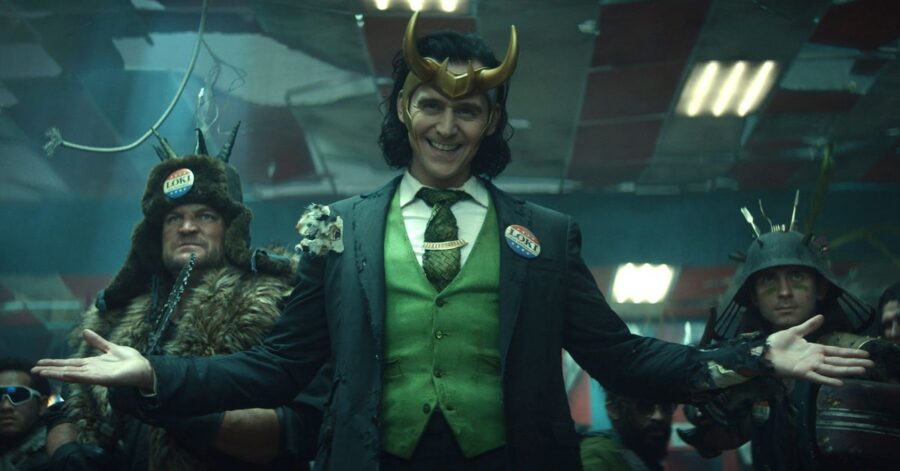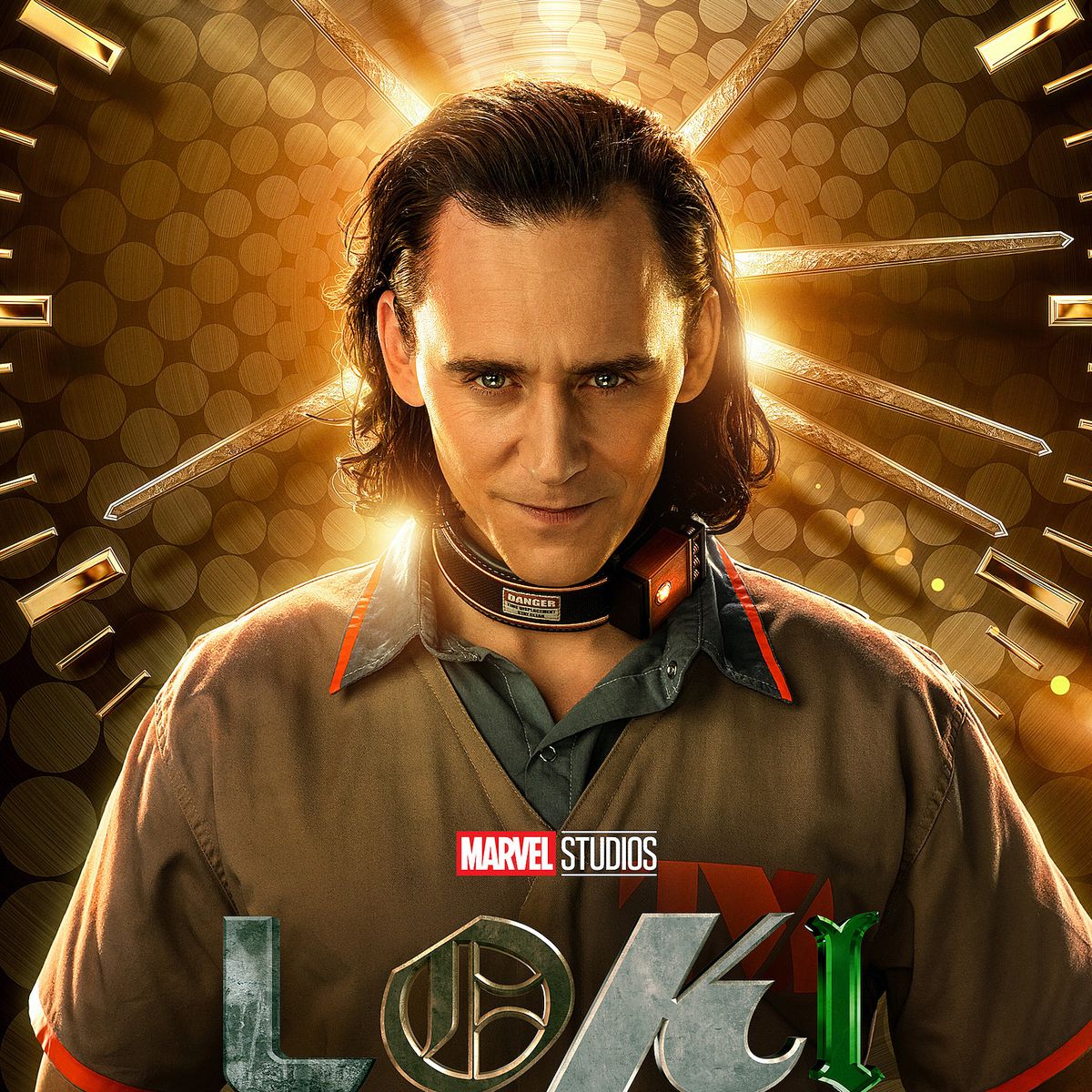A show about a villain has to have it’s own villain, and in the final moments of the first episode of Loki on Disney Plus, the latest Marvel Cinematic Universe show revealed the antagonist who will oppose Loki, who is on the run from his proper timeline.
The answer was extremely Loki of Loki.
[Ed. note: This piece contains spoilers for Loki episode 1.]
The villain of Loki is … another Loki. Or to put it in TVA terms, a variant on the run from his proper timeline.
Though the Avengers had some close calls in Endgame, Loki could mark the first time in the Marvel Cinematic Universe that a character from one timeline really gets to know himself from another one. But Marvel comics readers know that the Marvel Multiverse is composed of endless alternate realities and dimensions that exist alongside our heroes on Earth 616 (the regular Marvel Universe), and they interact all the time.
Until very recently in the comics, Loki was a powerful, deceptive, but ultimately irredeemable villain. Today, we know him as more of an antihero, who has looked at himself across many potential timelines and has begun to make changes for the better. But who is the real Loki? Let’s take tour of the Marvel Comics Loki variants who may have served as inspiration for the Loki TV series.
Different world, same Loki
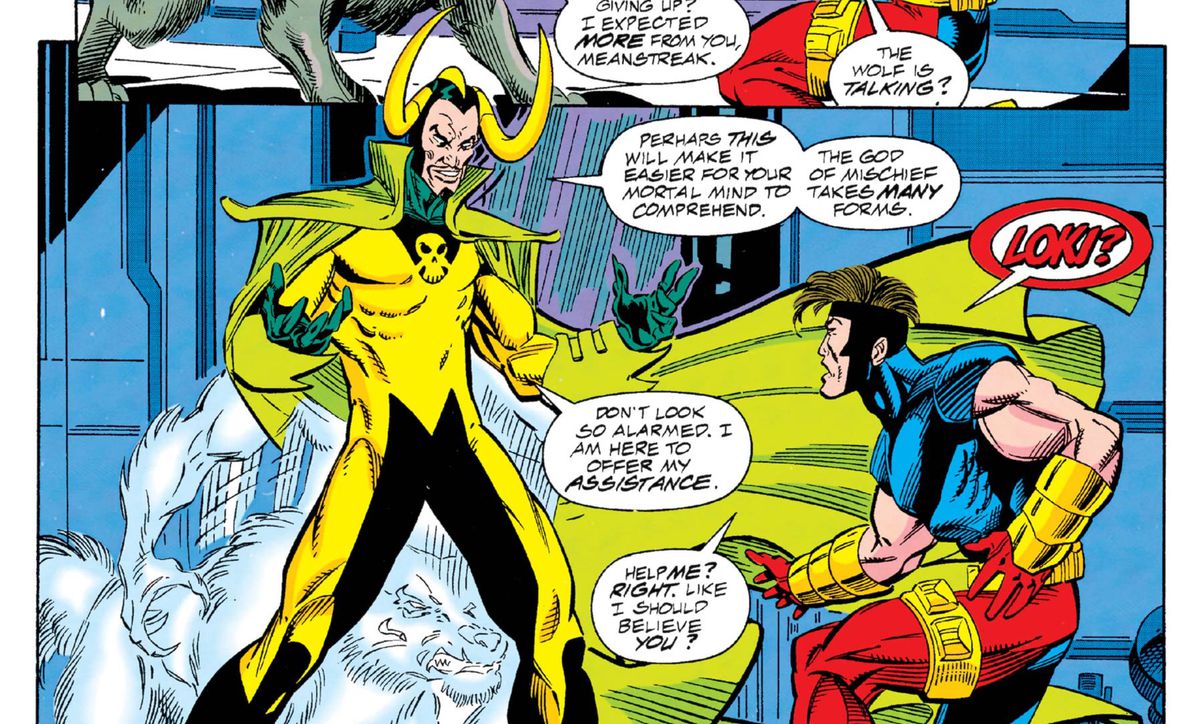
Image: John Francis Moore, Ron Lim/Marvel Comics
Like many sprawling comic book crossovers and events, forays into the Multiverse are often products of their time. When the futuristic Marvel 2099 universe was given multiple ongoing series in 1993, it was perhaps in hopes of attracting new readers that might have felt put off by the overwhelming backstory of ongoing books like X-Men or Spider-Man. The Loki of 2099 was a scientist named Jordan Boone who was apparently transformed into Loki, but ultimately took on the identity of Halloween Jack. To what degree Boone actually was Loki isn’t clearly defined, but he certainly looked the part, and showed up regularly around the 2099 universe to stir up trouble.
Likewise, when 1996’s Heroes Reborn reimagined Loki as his classic Silver Age self, it reflected the general feel of editorial decisions at Marvel during the time. A handful of younger creators that had made their careers working at Marvel before branching off to form Image Comics were brought back into the Marvel fold, and given carte blanche to reboot and repeat classic stories with minor updates. Their work showed an impatience with the slowly unraveling soap opera-style of storytelling made popular via Chris Claremont’s X-Men books and Steve Englehart’s Avengers.
Heroes Reborn Loki is cartoonishly evil and completely without depth, simply desiring to become the one God, which does actually almost happen before Odin steps in to battle him across New York City. Loki loses and the whole Heroes Reborn universe was more or less blinked out of existence by Franklin Richards (long story).
Marvel took another crack at a possible future in 1998 with MC2, a line inspired by What If…? #105, which told the story of May Parker/Spider-Girl, the daughter of Peter and Mary Jane. The MC2’s series A-Next brought in a mustache-twirling Loki to bring the new Avengers together in much the same way he’d helped create the original team; by posing such a threat that they had to combine forces to take him out. Here, Loki has a daughter, but MC2 sales faltered and the books were canceled without much time to delve deeper.
The Ultimate Universe also had a Loki, reimagined as a dapper villain who was as evil as he was well-dressed. Disguising himself as the Nazi Baron Zemo, Loki launches a full-fledged attack against Asgard, from which he was banished for the crime of murder. This Loki isn’t particularly deep, but his tendency to distract and manipulate are in great working order as he causes global catastrophes and forces the Avengers to retaliate.
Lokis who turn over a new leaf
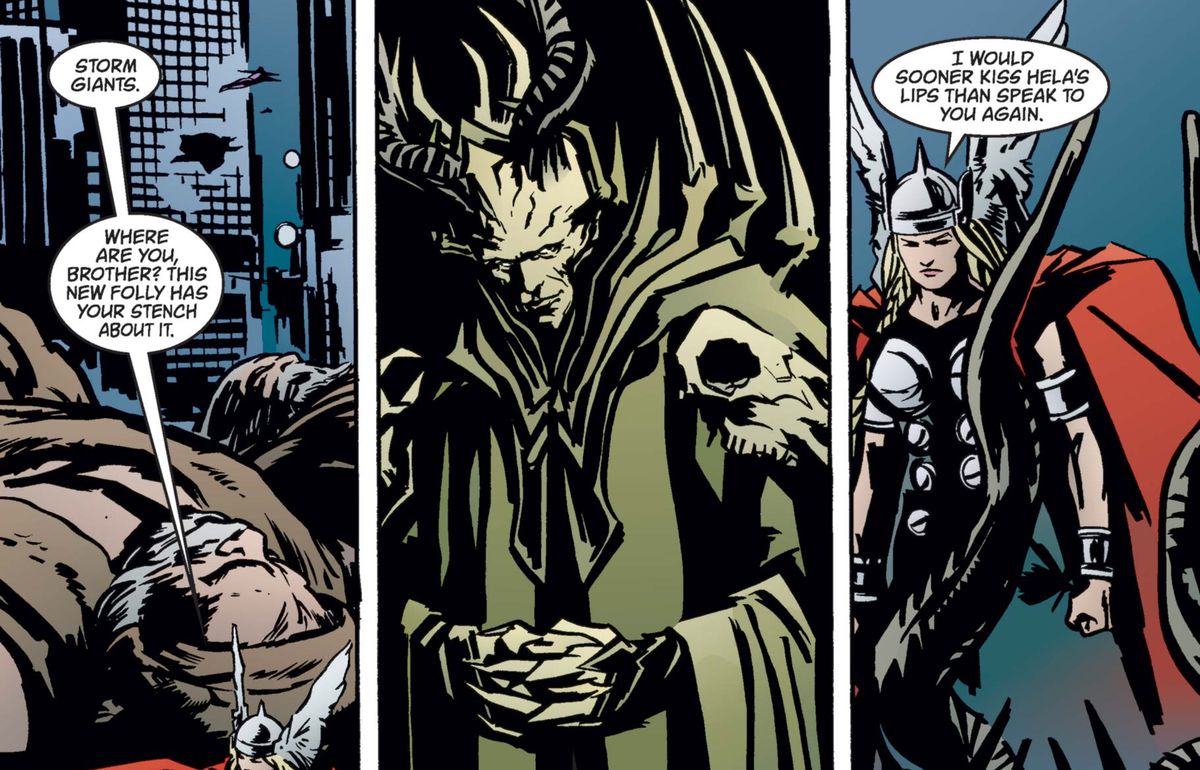
Image: Jim Krueger, Alex Ross, John Paul Leon/Marvel Comics
In the Earth X setting, a dystopian Marvel Universe where every person develops superpowers, Loki makes a handful of appearances — with a new design that includes tree-like features. This version of Loki tricked Odin into making Thor a woman so that he might learn humility, which is a policy we have many questions about but not much time to delve into here.
At first, the Loki of Earth X is just as intrinsically sinister as he was in his Silver Age appearances. He drops a few creepy one-liners about his sister Thor, seduces Clea into betraying Doctor Strange, and stands in opposition to Thor multiple times. Yet, this Loki learns about his nature and takes time to actually explore it, ultimately casting off his persona as an Asgardian and walking the Earth in hopes of finally finding himself. Though it’s a rocky road, he does ultimately choose to be a hero, giving us a rare glimpse of altruism from the God of Lies.
Loki lurks around the corners through much of Earth X and its sequels, Paradise X and Universe X. In this imagining, the Asgardians are amorphous aliens who become living embodiments of the stories humans tell. This idea is regularly revisited with Loki in many worlds, including Agent of Asgard’s King Loki, who tells a younger version of himself in no uncertain terms that he’s bad because people have imagined him that way and that he will simply never change — not unlike how Agent Mobius describe’s Loki’s place in the Sacred Timeline in Loki.
Agent of Asgard allows Loki to grow away from his unending identity as “the sin that will not be forgiven.” King Loki’s speech telling Loki that he is doomed to be the unrepentant villain only makes Loki struggle to define himself on his own terms. And with the help of Verity Willis, a human with the ability to see through all lies, our universe’s Loki reimagines himself as the God of Stories.
Lokis who finally win
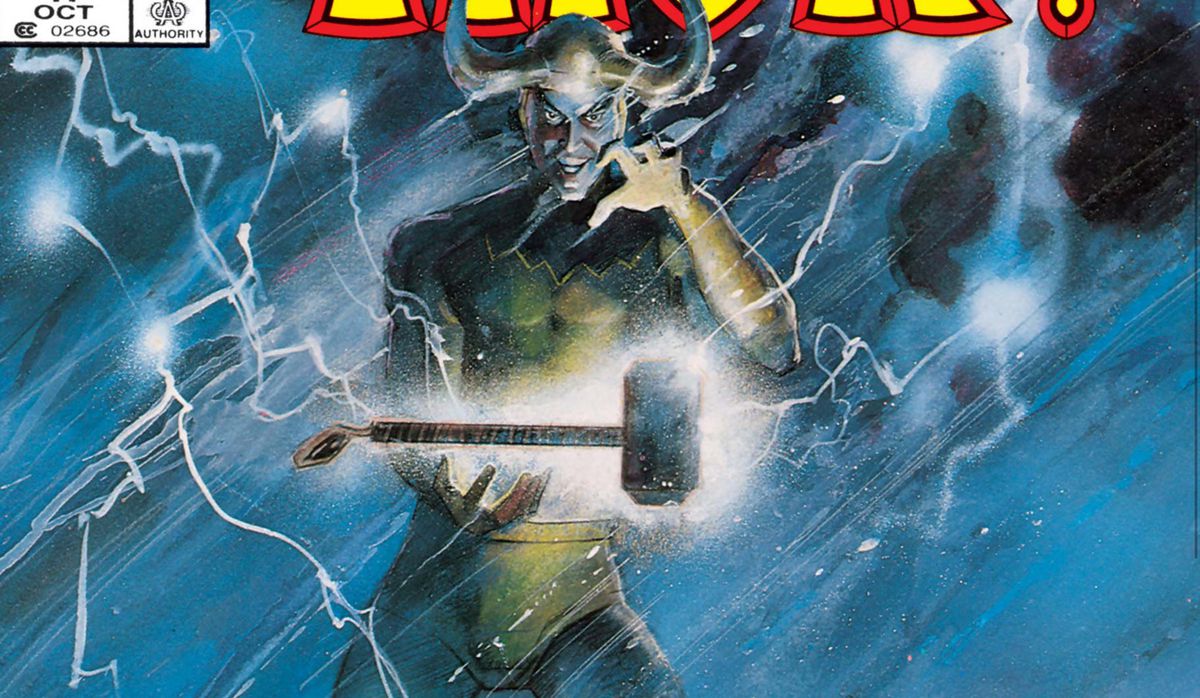
Image: Bill Sienkiewicz/Marvel Comics
Very seldom does Loki ever truly win the day even in the multiverse, but there are exceptions. In What If…? #47, Loki briefly reigns supreme when he finds Mjolnir before Thor ever does. But in the end, this advantage simply delays Thor’s rise to power as the Odinson. Again, Loki’s short-sightedness and need for revenge against Odin cost him everything.
In Loki (2004), we saw what happens when Loki gets his wish and lays claim to the throne of Asgard. Immediately imprisoning opposing gods Lady Sif, Balder, and Thor, Loki becomes a tyrant. But in the comic’s opening sequence, he gets a crack in his confidence when a small child tells him his rule can never be truly complete, and from there Loki’s fragile ego only increases throughout the mini-series. To this Loki, he has been grievously wronged by the Asgardians, and all that he does is nothing more than justifiable revenge, but by telling the story from his perspective, writer Robert Rodi and artist Esad Ribić present him as surprisingly relatable.
For a shapeshifter, Marvel’s comics multiverse has rarely done a complete image makeover of him over the last many decades. Yet, even that stereotypical image of a cackling, devious God has been used to give significantly greater agency to the main universe version of the character. Going forward, Loki’s complicated and unique awareness of himself across the Multiverse could make for an incredible storytelling device, and Loki is primed to make it happen.
Polygon – All
Source link
Related Post:
- Loki episode 3 confirms Loki’s bi — but can Marvel commit?
- Menat as Felicia Figure Comes in Player 1 and 2 Variants
- Tom Hiddleston on rethinking Loki so other actors could play him on Loki
- Hasbro Unveils 32-inch, $400 Toy Of Marvel Comics’ Galactus
- Who are Marvel’s Eternals? Neil Gamain’s comics explain them the best
- Venom’s son is taking over his dad’s mantle in Marvel’s new comics
- How to watch Loki on Disney Plus without marathoning every Marvel movie
- Marvel Villainous’ Loki set, an excuse to embrace your darkest and cleverest self • Eurogamer.net
- Loki director details the hidden sci-fi references in the Marvel Studios show
- Soapbox: Super Metroid Showed Me I Had The Right To Exist
